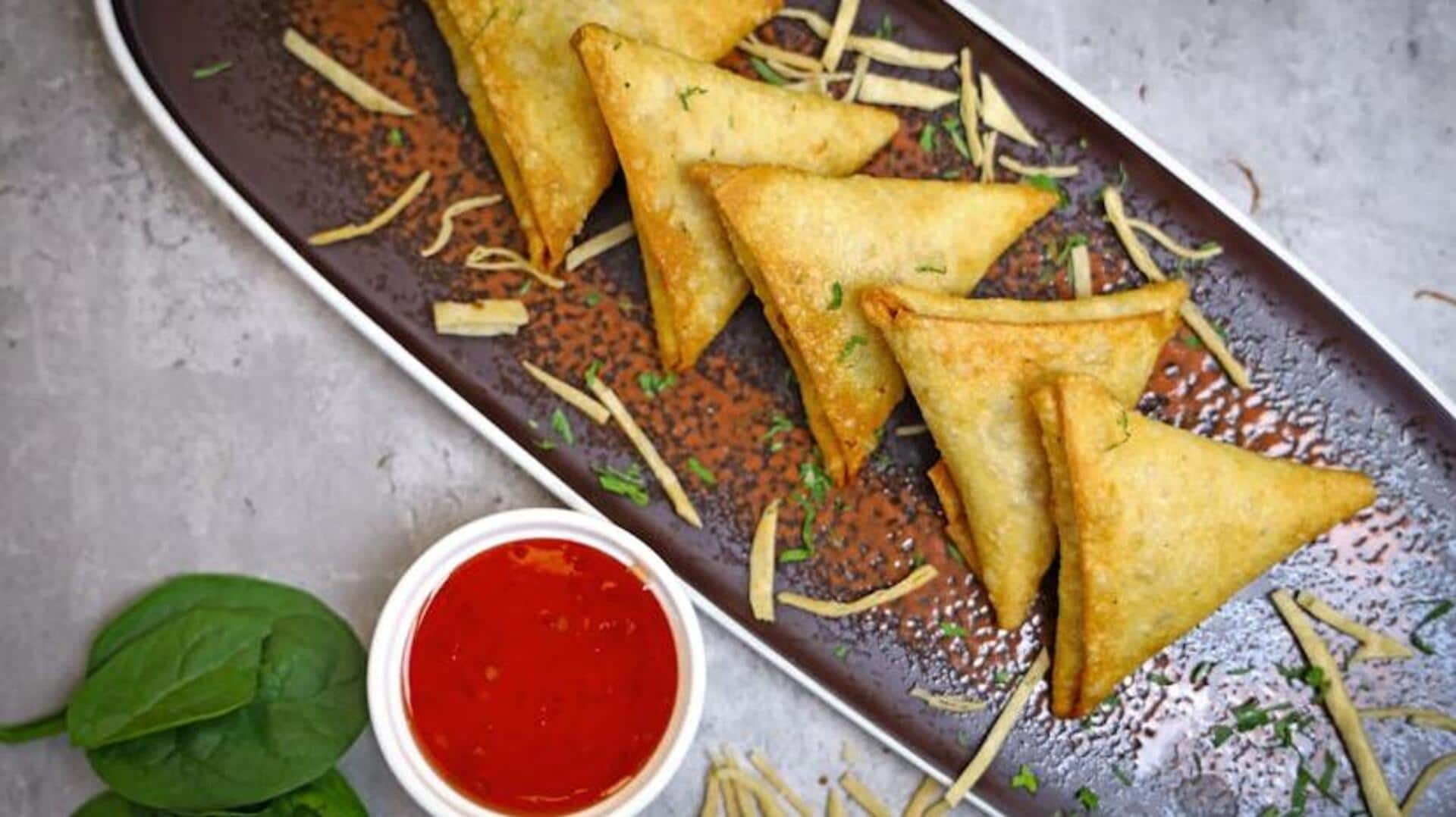
The enduring saga of samosa: Origin, adaption, and expansion
What's the story
The samosa, a beloved snack worldwide, has a fascinating history that begins in the Middle East, long before it became an iconic part of Indian cuisine. This triangular pastry, typically filled with spiced potatoes, peas, and sometimes lentils, has journeyed across continents, evolving with the tastes and ingredients of different cultures. This article delves into the samosa's journey from ancient times to its present-day status as a cherished comfort food.
Origins
From Persia to the Indian subcontinent
The samosa was actually named "sambosa" in the Middle East. Historical documents indicate that it arrived in the Indian subcontinent between the 13th and 14th centuries via traders and travelers. While the original filling was meat, its migration to India led to the rise of vegetarian variants to align with the vegetarian diet in Hindu culture.
Adaptation
A snack for every occasion
In India, the samosa experienced a major culinary makeover. Not only did the preparation method change, but the filling also got a spicy Indian twist. The Indian samosa is generally larger than the Middle Eastern version and is stuffed with a flavorful filling of mashed potato, peas, and spices. It became a beloved snack, served at practically every occasion, from daily tea time to grand festive celebrations.
Expansion
Global footprints
The British colonial era facilitated the spread of samosa beyond South Asia to places like Africa, Southeast Asia, and North America. In this culinary migration, each region infused its unique flavor into the samosa recipe. In Kenya and Tanzania, samosas are filled with minced meat or fish, along with a medley of indigenous spices. This variation highlights the snack's versatility and global appeal.
Innovation
Fusion variants emerge
As the world of food grows increasingly global and intertwined, fusion versions of the beloved samosas have started to pop up. In countries with large South Asian diaspora communities, such as Canada and the UK, restaurants are now serving samosas with unconventional fillings like cheese and jalapeno or chocolate and nuts. These new-age samosas appeal to a wider audience, while keeping the traditional triangular shape intact.
Enjoyment
Tips for enjoying samosas at home
Homemade samosas offer the advantage of tailoring the recipe to individual preferences. Opting to bake instead of fry can drastically cut down on calories while still delivering that crave-worthy taste. And, getting creative with fillings like spinach and paneer or sweet corn and bell pepper brings a fresh twist to this classic snack. Plus, it makes it vegetarian or vegan!